Introduction
The bicycle: a staple of modern transportation and leisure. It’s hard to believe that there was actually a time where these contraptions didn’t exist.
Every vehicle has its own beginnings, and that is no different for the bicycle. The bicycle has gone through a lot from the early 19th century until now to become what it is today. It has an intriguing history that is most certainly worth sharing.
If you’re doing the rounds on the internet today and you’re wondering how one of the world’s favorite ways to pass time came to exist in the first place, read on and fasten your helmet as we’re going to take you on a ride through a history of cycling through the ages!
19th Century
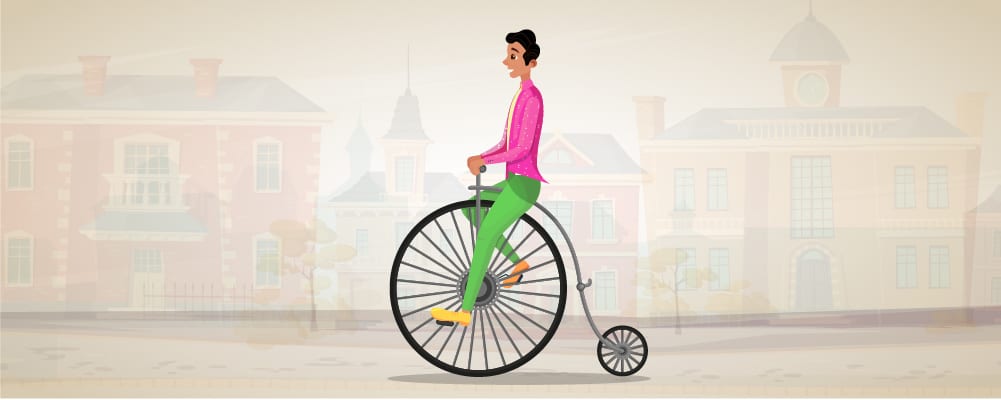
The bicycle had its humble beginnings in the 19th century – an era of constant change and experimentation with new gadgets and technologies. It comes as no surprise, then, that the very first bicycle was born at this time.
THE RUNNING MACHINE
 So who do we have to thank for the early invention of the bicycle?
So who do we have to thank for the early invention of the bicycle?
That would be a German Baron by the name of Karl Von Drais!
The very first ‘bicycle’ was known as a Laufmaschine, which is essentially German for ‘running machine.’
This was not the only name that the machine was given, however.
It also was known by the following titles:
- Draisine
- Hobby-horse
- Velocipede
Drais made the machine in 1817, and it didn’t even have some of the basic features you would expect to see on a bicycle today – pedals, brakes or chains.
To use the contraption, you would instead push forward off the ground using your feet, which was certainly no easy feat given the 50 pound frame that it boasted.
The contraption consisted of wood and would have a balance board where the rider could prop their arms. Pretty soon, this bicycle was circulating around the world in Austria, Italy, Great Britain and the United States.
Of course, this invention was the latest and greatest in technology as far as transportation is concerned, meaning that they were expensive.
In 1818, Denis Johnson patented his own improved draisine and they were mainly ridden by people of nobility. Unfortunately, this design wasn’t the most practical, proving to be awkward to use on bumpy roads.
This was the beginning of the two wheeled bicycle, even if its time in the spotlight during 1818 was only brief.
THE ERA OF 3 AND 4 WHEELER BICYCLES
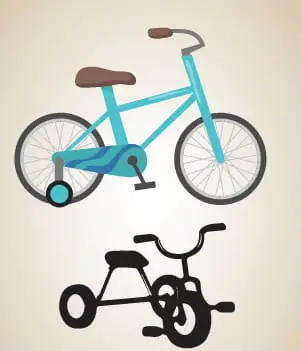 During the 1820s to 1850s, a new kind of bicycle became popular: the 3 and 4 wheeler bicycle.
During the 1820s to 1850s, a new kind of bicycle became popular: the 3 and 4 wheeler bicycle.
It may sound a little bizarre to us today to think of a bicycle for four wheels, but at the time they were the latest in technology.
The very first three and four wheeler bicycles were designed to provide users with a more stable ride.
Three and four wheeler bicycles, known as tricycles and quadricycles respectively, were made with a range of different designs. As time went on, some had pedals, hand cranks and treadles.
Unfortunately, the 3 and 4 wheeler bicycle came with some problems. They were designed in such a way that they struggled with problems relating to resistance and weight.
The four wheeler bicycles of the 1950s made by Willard Sawyer were incredibly popular, and became a worldwide sensation.
Many different styles of tricycles and quadricycles were created and adapted through the years as technology developed.
THE SCOTTISH INVENTIONS
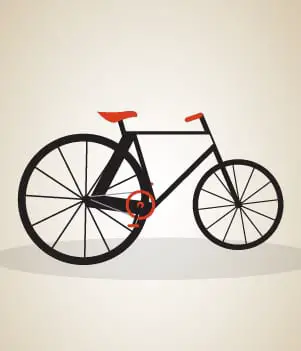 During the 1830s, a major development was made in bicycle engineering.
During the 1830s, a major development was made in bicycle engineering.
Kirkpatrick Macmillan, a blacksmith from Scotland, is widely credited to be the brains behind the very first mechanically propelled bicycle.
Macmillan first laid eyes on a hobby horse, and decided to craft one for himself.
In the process, he realized that the design could be dramatically improved if it could be operated without the user needing to put his feet on the ground.
Then, during 1839, Macmillan’s new vehicle was ready to go. It used mid mounted treadles, and these were connected using rods to a crank on the rear.
While the design was an innovative one, it was unfortunately incredibly heavy and required a lot of effort to operate it.
With that being said, Macmillan eventually got to grips with it and is reported to have travelled fourteen miles in less than an hour using the contraption.
He allegedly then rode 68 miles during 1842, an excursion that took two days in total.
If you’re interested, you can even find a replica of the machine to this very day in the Glasgow Museum of Transport.
It should be noted that while Macmillan is considered to be the first person that made a mechanically operated vehicle, the first documented creator of a two wheel bicycle that was rod driven was Thomas McCall.
McCall was also from Scotland – some pretty big innovations from just one location!
THE FIRST BICYCLE WITH PEDALS
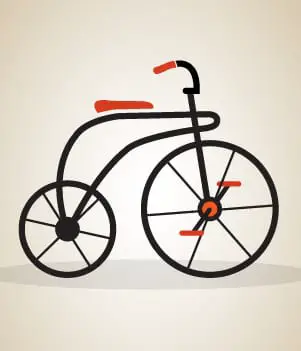 Yet another key innovation was made during 1853.
Yet another key innovation was made during 1853.
Again, Germany was the forefront of the discovery of this new development – pedals.
Phillipp Moritz Fisher, a german man, would use the original draisine as a child as transport to and from school.
Later in his life, Fischer created the first first bike with pedals.
It was called the Tretkurbelfahrrad. You can still see this vehicle on display in Schweinfurt in the municipality museum.
However, there is some dispute about this. Pierre Lallement made a patent that said the invention of the pedals was entirely down to him.
The machine shown on Lallement’s patent featured a design that looked more like the velocipede invented by Denis Johnson, except that it instead featured a rotary crank and pedals.
After this, numerous inventors made their own prototypes of velocipedes with pedals. These early machines were the first ones that were actually called ‘bicycles.’
During the 1860s, however, they also went by another name: boneshakers.
THE BONE-SHAKER
 Bicycle-like vehicles created in the 1960s were often known as boneshakers.
Bicycle-like vehicles created in the 1960s were often known as boneshakers.
This sounds like a rather daunting name, and honestly the contraption itself was rather scary.
In fact, the name is derived from how uncomfortable it was to ride.
This was thanks to the wrought iron frame and the wooden wheels, featuring tires made out of iron. It would also shake when you rode on cobblestones.
The bone shaker operated through the use of rotary cranks and pedals that were mounted onto the front wheel. This made it somewhat challenging to steer, but thanks to the positioning of the paddles it was also much easier to ride faster.
As a result of the new things that were added, it was very simple to produce the vehicle in mass quantities and thanks to the metal components it was also possible to brake.
The bicycle did have some limitations in terms of rotational speed and could be quite unstable, and it could sometimes be difficult to pedal.
The first commercially successful boneshaker was developed in France. It was during the 1860s that the esteemed Olivier Brothers, Pierre Michaux and Georges de la Bouglise created a partnership, resulting in Michaux and Company.
The company went on to mass produce the boneshaker bicycles. These vehicles would continue to be highly popular for numerous years. They were available for an expensive price.
THE HIGH-WHEEL BICYCLE
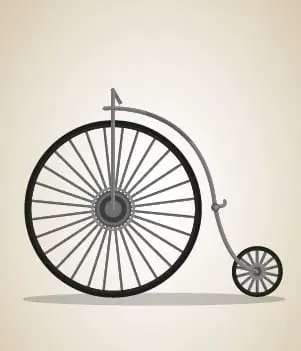 The 1870s brought with it the newest innovation in bicycle technology: the penny farthing.
The 1870s brought with it the newest innovation in bicycle technology: the penny farthing.
The name of the penny farthing is derived from two coins, the penny and the farthing.
The bicycle was similar to the boneshakers in many respects, but with some key differences in terms of wheel size.
The bicycle featured one exceptionally large wheel in the front, and a slightly smaller wheel positioned in the back.
It had its own disadvantages and advantages, but it could achieve some high speeds. Unfortunately, it wasn’t particularly safe. It was harder to brake when traveling at high speeds and users were much more likely to get injured.
This bike is also known as the ‘high bicycle,’ and its creation is said to be attributed to Eugene Meyer. Later on the design was modified by James Starley.
Starley added spokes and mounting steps to the bicycle, and named this creation ‘Ariel.’ In fact, some consider Starley to be the father of the British Cycling Industry.
Of course, due to the hazards associated with riding the Penny Farthing, it eventually fell out of popularity. Many users would prefer to instead ride tricycles or quadricycles which were considered to be more safe.
They were also challenging for many women to ride due to the fashion of the time. As a result of this, the Penny Farthing was a bicycle more frequently used by the daring youth of the time.
It was by this point that having a bicycle was seen as almost a status symbol. Having one demonstrated that you were a person of the higher classes.
It was virtually inaccessible to poorer people or those of the average working class up until around the 1890s because it was so expensive.
THE SAFETY BICYCLE
 After the Penny Farthing, it was clear that the bicycle needed to become safer.
After the Penny Farthing, it was clear that the bicycle needed to become safer.
Thus, during the 1880s, the Safety Bicycle was born.
With the emergence of the Safety Bicycle, perceptions regarding the bicycle in general began to change.
It was no longer a dangerous vehicle for sport, and it instead became something that would be used for everyday transport, whether you were male or female and regardless of your age.
The very first safety bicycle did have some minor safety problems, mainly due to the fact that the bicycle was still a little bit too high off the ground. With that being said, the bicycle da chain drive front wheel that helped.
The first safety bicycle that was really cemented in history was one called Rover, made by John Kemp Starley in 1885.
You heard that right, there is a relation to James Starley – John Kemp Starley was actually James’s nephew.
This particular design was never patented, but it consisted of a front wheel that you could steer that featured a big front wheel, a sizable caster and wheels that were equal in size. Starley’s design featured a chain drive on the rear wheel.
Naturally, with such a successful design many inventors attempted to replicate the design in their own way.
The safety bicycle very soon replaced the Penny Farthing or high wheel bicycle, as it was much easier to use on dirt roads and on paved streets.
It wasn’t quite so comfortable though because the wheels were smaller and there was no suspension.
In 1888 John Dunlop went on to reinvent the pneumatic bicycle tire. This was truly a revolution, resulting in a much more comfortable, smooth ride on paved streets.
This means that you didn’t need to worry about having large front wheels anymore, as all of the comfort concerns had been eradicated. The bicycle was easy to steer around corners as it had a much lighter design and was well made.
20th Century
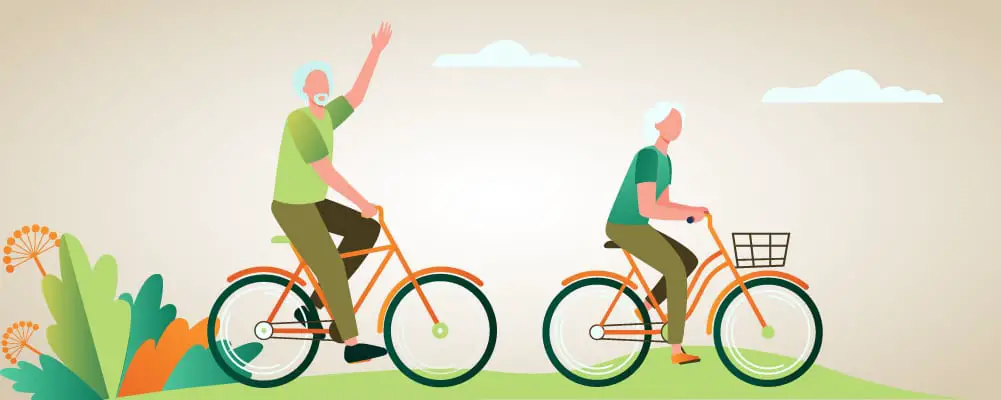
THE ROADSTER
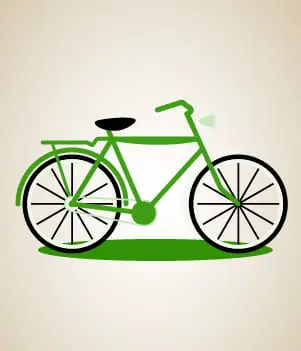 The next big invention didn’t come until around the 1890s and early 1900s with the creation of The Roadster.
The next big invention didn’t come until around the 1890s and early 1900s with the creation of The Roadster.
The design was patented and documented by the time the 1890s rolled around, and it was a huge innovation for female cyclists thanks to the step through frame, instead of a diamond shape design featured on the men’s model.
Thanks to this, women were able to mount the bike even if they were wearing skirts and dresses.
The roadster was ideal as it could be used to transport a person from one location to another in a much faster time frame. Eventually, it was used for everyday transport.
The Roadster featured a steel frame, and the rider would need to sit upright as a result of the way that the frame and handlebars were positioned. Eventually the Roadster was also known as the Dutch Cycle.
This was because around 85% of roadsters were made in the Netherlands. It was incredibly popular among the British public.
Unfortunately, it was at around this point that bicycles were becoming less popular in the United States, though they remained quite fashionable in Europe other than a minor decline during the 1900s.
This is somewhat attributed to the popularity of the automobile, and some were viewing them as children’s toys.
WORLD WAR II: MILITARY BICYCLES
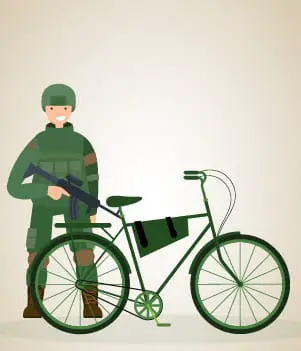 You read that correctly – bicycles were even used during World War II.
You read that correctly – bicycles were even used during World War II.
Of course, during the war, horses were still the main means of traveling around. However, bikes had a pretty important role to play during the second World War.
The bicycle first made its way into service during the 1880s, though the British first considered their use in battle during 1885.
Bicycles had a number of different uses during wartime, but they were most often used by paratroopers. In fact, US planes would drop some bikes for troops on the front line to use, giving the bikes the nickname ‘bomber bikes’ in turn.
In specific, the armed forces would use the M305/G519 military bicycle, and later the M306 was created – the women’s military bicycle.
While the bicycle was still rather common in daily life during World War I, it didn’t really become common on the battlefield until World War II. The German army initially used bicycles in order to invade Poland and Normandy.
It was the Japanese forces that really took advantage of the bicycle during the war, however.
They were used during the invasion of Malaysia, primarily because fuel was running short and bicycles were the most efficient form of transportation otherwise.
Rubber was also running short, which means that a lot of soldiers were riding bikes on just the rims when their tires went flat. In total, the Japanese deployed roughly 50,000 bicycle troops.
In 1942, the BSA Airborne Bicycle was created. These bicycles were made for paratroopers from the UK, and they had a lot of functionality. They would fold down and could be fastened to the front of their suit.
They were so portable that you could even carry them when you were jumping out of airplanes. If the trooper wanted to detach the bike from themselves while jumping, they simply needed to pull on the quick release strap.
This was a noise free transportation method that proved essential during the war – you can even find many bicycles used during combat available as collectors items, or in museums.
THE FLYING PIGEON
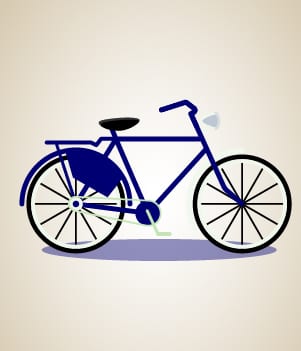 The next historic bicycle was known as The Flying Pigeon.
The next historic bicycle was known as The Flying Pigeon.
This bicycle meant a lot not only in terms of the development of bicycles as a whole, but it also had relevance as a symbol of life.
It represented an ‘egalitarian social system that promised little comfort but a reliable ride through life.’
If you had a bicycle, a sewing machine and a watch in China during the 1950s, you were viewed as a classy, well to do person with a lot of money.
As you can probably imagine, they were a huge hit among the Chinese gentry for this very reason.
In fact, the Flying Pigeon was so popular that China was eventually called zixingche da guo, which translates to the Kingdom of Bicycles.
Throughout the 1950s up until the 1980s, the flying pigeon was a huge success in the People’s Republic of China.
So much so, in fact, that it was even a government approved method of transportation. Then, in the 60s and 70s it was the single most popular kind of mechanical vehicle on Earth with over 3 million versions sold.
Flying Pigeon was by far the largest bicycle manufacturer during the beginning of the 1980s, and it was even rather popular among workers.
It was somewhat challenging to get your hands on one, however, as you needed roughly around four months of wages and good connections to purchase one.
NORTH AMERICA - THE CRUISER VS THE RACER
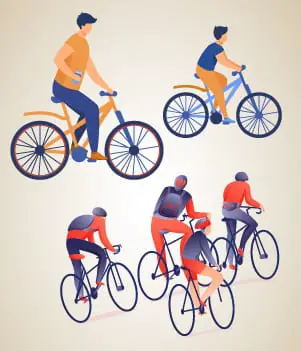 In North America, the Cruiser and the Racer bicycles were immensely popular during the middle of the century, especially in the 1950s, 60s and 70s.
In North America, the Cruiser and the Racer bicycles were immensely popular during the middle of the century, especially in the 1950s, 60s and 70s.
If you were a regular cyclist looking to ride as a hobby, then you likely would have had a cruiser during this time.
These bicycles are actually rather popular even now, and they are known for providing you with a comfortable, upright position while you are riding.
They were one of the most popular bicycles in the United States during the middle of the century, and they were designed to be exceptionally durable.
The cruiser would feature one singular gear, pedal driven brakes and they would have balloon tires designed for absorbing shock. They would also have safety reflectors, headlamps and more for the sake of the rider’s safety.
One of the main manufacturers of the cruiser bicycle was Schwinn, a brand that’s still immensely popular even today.
The bicycles were well suited to flat terrain, and they were especially popular in certain trades, such as for bicycle couriers and paperboys.
The cruiser eventually fell more out of style during the 1960s, making way for newer bicycles, though it was still commonly used for functionality and for recreation.
They eventually gained the nickname ‘beach cruisers’ as they were often used at the beach.
The alternative option that was also quite popular during the 1950s was the racer bicycle. This kind of bicycle was also commonly referred to as a sports roadster or English racer by many Americans as it was initially imported from Europe.
It was exceptionally popular among adults that liked the idea of a cruiser but wanted something slightly different, designed for different terrains.
This kind of bike was incredibly fast, and could climb up hills much more easily thanks to its lightweight nature, numerous gears, taller wheels and narrow tires.
Eventually, Schwinn started manufacturing their own version of the sports roadster.
It was during these years, especially the 1960s, that an interest in exercise in general increased. Thanks to this, the popularity of the bicycle increased, eventually resulting in a bicycle boom in the 1970s.
In fact, in 1975 there were more than 17 million bicycles sold in America alone. Throughout the 1960s and 70s, the amount of bicycles sold on a yearly basis doubled, then doubled again.
This popularity is in part due to the fact that new cyclists found European kinds of bicycles more enjoyable to ride. These bicycles were referred to as sport/tourers, ten speeds or sports models.
BMX BIKES
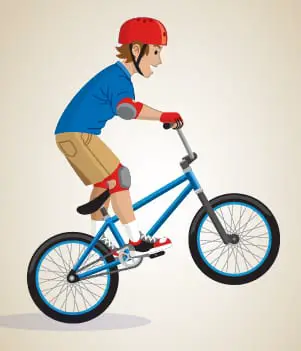 It was during the 1970s that a new kind of bicycle would begin to take the world by storm.
It was during the 1970s that a new kind of bicycle would begin to take the world by storm.
Up until the 1970s, the bicycle was mostly the same and then the BMX bicycle came along.
This bicycle was created in California, and featured wheels ranging from 16 to 24 inches.
This made them pretty popular with teenagers that wanted to look like they were riding a motorcycle, but without spending extortionate amounts of money.
This kind of bike was innovative, providing new cyclists an opportunity to ride in a whole new way.
The BMX, or bicycle motocross, was created in the early 1970s. It was designed to be a more affordable version of motocross. The bicycle was lightweight and ideal for a range of different purposes.
It could be used in pretty much any terrain imaginable, from urban, city streets to dirt tracks.
The bikes became particularly popular after the release of a motorcycle documentary in 1972 called ‘On Any Sunday.’
At the time, BMX bikes were imported around the world, which was part of the reason the documentary was made. The documentary cites the invention of the BMX as one of the reasons for the motorcycle boom in the 1970s.
There were also a lot of organizations started for bicycle motocross at this time, such as the National Bicycle League, National Bicycle Association, International BMX Federation, and more.
The BMX bike also made way for things like freestyle BMX driving, BMX routines, and tricks. In fact, BMX Freestyle was even popularized by the founder of Haro Bikes, Bob Haro. He was often referred to as ‘The Father of Freestyle.’
Naturally, BMX bikes are still popular to this day, and they come in a range of different models:
- Dirt – these bicycles feature much wider tires, when means that they have better grip on a dirt surface
- Park – park BMX bikes are designed to be lightweight, and have very few enhancements to the overall structure.
- Flatland – these bicycles are well balanced and are primarily used for routines and tricks. They feature a slightly different frame geometry to the park bike to allow the user to perform the various tricks.
- Race – these bikes come with advanced brakes and feature a much bigger front sprocket, and this allows you to travel at much faster speeds and to brake easier at higher speeds.
- Street – This type of BMX bike is much heavier and features little metal pegs that spread from the axles. This will allow any rider to step on them when they are doing routines and tricks, and they don’t tend to come with brakes, making them more unsuitable for traveling at high speeds in pedestrian areas.
MOUNTAIN BIKES
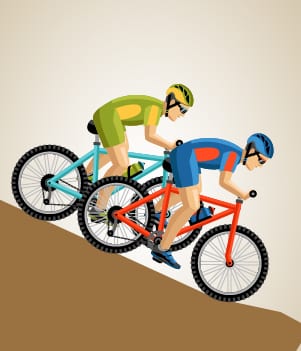 Mountain bikes are pretty common now, but they didn’t really emerge onto the market until around the 1970s.
Mountain bikes are pretty common now, but they didn’t really emerge onto the market until around the 1970s.
This was another kind of bicycle that came from California and it was initially witnessed during the 1970s.
With that being said, it wasn’t widely popular and produced at a mass scale until around 1981.
So how did the mountain bike come to be? Well, main serious bikers in a location called Mount Tamalpais in California modified normal bikes at the time, then changed them into versions that could be used for racing.
As you can probably imagine, a lot of these riders looking to experiment with a new style of biking got injured.
Around this time a rider by the name of Charlie Kelly started to arrange an event called the Repack, a racing event down the Mount Tam that took place each year from 1976 up until 1984.
Quickly mountain biking evolved from a simple hobby to a competitive sport. A sport that needed a real, suitable bike to go along with it.
Kelly, along with a friend named Joe Breeze, worked on creating a bike that could handle mountain biking. The frame of the bike was made on top of a 1941 Schwinn bike, and in 1977 the very first mountain bike was made.
The ‘Breezer’ then made its way onto Mount Tam and even won the Repack race. His second modified version is even on display in the Marin Museum of Bicycling in California, while the first one is located at the Smithsonian Museum today.
Then during the 1970s and 1980s, many popular road bicycle manufacturers would begin to make mountain bicycles. These consisted of high quality, yet lightweight materials.
The very first model that was mass-produced was called the Specialized Stumpjumper that was made in 1981. From then on, mountain biking became a huge success, especially during the 1990s and 2000s.
There’s even a mountain biking world championship, an international racing circuit, and the FMB World Tour.
There is a range of different kinds of mountain bikes today, so they’ve evolved since their original debut onto the market. Some types include:
- Soft tail – these mountain bikes are generally designed for cross country, and they feature pivots in the frame and no rear shock.
- Full suspension – These bikes come with suspension both on the front and the rear.
- Hard tail – these come with suspension forks on the front wheel and a rigid frame
- Rigid – a mountain bike that has big tired and straight handlebars, they generally don’t have suspension on the front or on the rear
21st Century

HYBRID AND COMMUTER BICYCLES
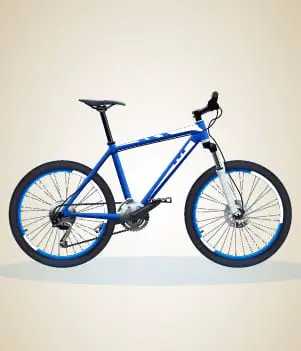 As technology has advanced throughout the 21st century, so have bikes.
As technology has advanced throughout the 21st century, so have bikes.
All sorts of new technology has made it possible not only to bike outdoors, but also indoors with the introduction of exercise bikes.
The most substantial contribution to the history of the bike, however, is hybrid commuter bicycles.
In the present century, bicycles have been designed to fit more specialist needs, and as such there are more and more cyclists now than ever before.
Due to the fear over carbon footprint and global warming, and an increased interest in exercise, more people are now choosing to commute to work. This calls for a bicycle to help you to do that very thing much more easily.
The main point of a hybrid bicycle is to have something that is comfortable, yet practical.
These kinds of bicycles take different ideas from various other kinds of bicycles, and molds them together in a hybrid bike to make a comfortable option for the everyday commuter cyclist.
They generally consist of much thinner wheels, a lightweight frame, a range of gear options, straight handlebars and places where users can hold drinks and other items.
It also has lights on the front and the rear to accommodate for early morning or night time riding.
There are a range of different hybrid and commuter bicycles available and a user can choose one based on their individual preferences.
Some are designed for faster riding, while others are made for casual use. You can choose bicycles that can be used on a range of different road surfaces.
There are five key types of hybrid bicycles that are currently available:
- Cross Bike – these are all in one style bicycles that have been made to be thinner.
This is so that it’s possible to use it in touring competitions on a range of surfaces, whether they are paved or rougher. The bikes tend to have reinforced brakes, light frames, and tires, though they maintain a casual appearance.
- Trekking Bikes – These are essentially slightly smaller, ‘lite’ editions of a regular mountain bike.
They are made for paved surfaces, and they come equipped with a comfortable seat, lights, mudguards, and other key accessories for a comfortable ride.
- City bikes – these are somewhat similar to commuter bikes in a way, but they are better used for short trips in locations such as the city.
They are close in design to the mountain bike, but they are much more comfortable, easy to use, and come with lights. They are suitable for use in the rain but they don’t tend to come with active suspension.
- Commuter bikes – As we covered, these are a jack of all trades kinds of bicycles.
They are best used for longer commutes, and they come with features such as full fenders, carrier racks, and they have a frame that is designed to support things like baskets and mountain racks. They are best for commuters.
- Comfort bike – this is another kind of bike that is good to use when traveling shorter distances.
They are good for shopping or for visiting someone local. They don’t have active suspension usually, and they are fairly basic as a whole.
RECUMBENT BICYCLES
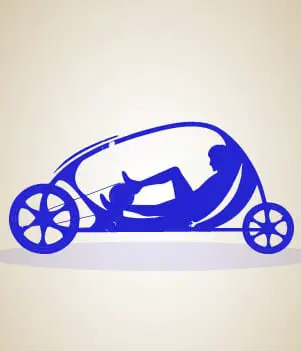 Recumbent bikes aren’t necessarily a new thing. In fact, they were originally created in 1893, and they were later banned from racing in 1934.
Recumbent bikes aren’t necessarily a new thing. In fact, they were originally created in 1893, and they were later banned from racing in 1934.
They started to rise in popularity once more during the 1970s thanks to a number of new events created.
In 1979, the very first recumbent bicycle was put on the market, and it was called the Avatar 2000.
Electric recumbent bikes were then made in the 1980s. In the 21st century though they have again become popular.
Recumbent bikes can look pretty odd if you see one. They consist of a seat that’s slightly reclined, so the cyclist looks like they are lying down as they ride the bicycle. This actually has a number of benefits.
For starters, recumbent bikes allow you to ride slightly closer to the ground than you would be if you were sitting on a regular bike. This means that if you fall off, it’s not going to hurt as much when you hit the ground.
In addition to this, the bicycle allows you to rest our neck and back, and it can help to improve your circulation and will give you better endurance over long distances.
They can also travel a lot faster as they are more aerodynamic as a result of the recumbent positions. There’s no need to lean over when you use the bicycle.
Summary
As you can see, cycling is a sport with a vast, intriguing history. From the very first ‘bicycles’ in the 19th century, then known as velocipedes or draisines, up until the bikes that we know and love today.
Technology has changed a lot throughout the years, but one thing remains the same – our love of the bicycle.
Citations
https://www.newscientist.com/article/mg18524841-900-brimstone-and-bicycles/
http://www.bbc.co.uk/history/historic_figures/macmillan_kirkpatrick.shtml
https://collection.sciencemuseumgroup.org.uk/objects/co25833/rover-safety-bicycle-1885-bicycle
http://www.bergerwerke.com/historyG519.html
https://www.ibiblio.org/hyperwar/PTO/RisingSun/BicycleBlitz/index.html
http://www.flying-pigeon.eu/historia_bicicletachina.htm
https://mmbhof.org/mtn-bike-hall-of-fame/history/


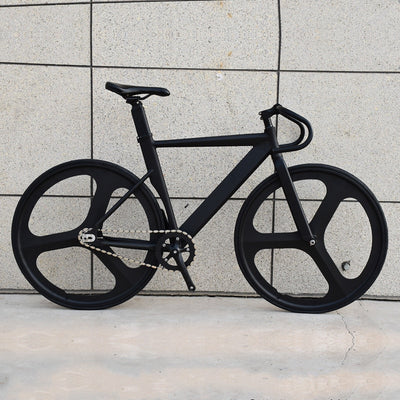
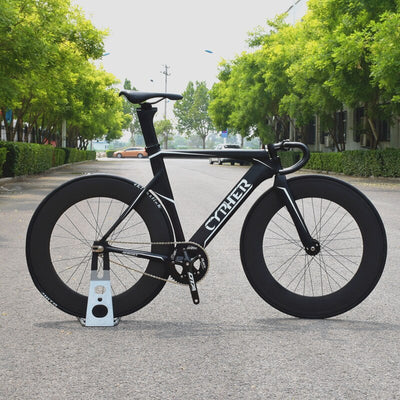
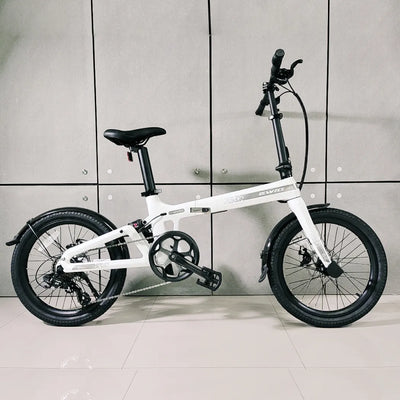

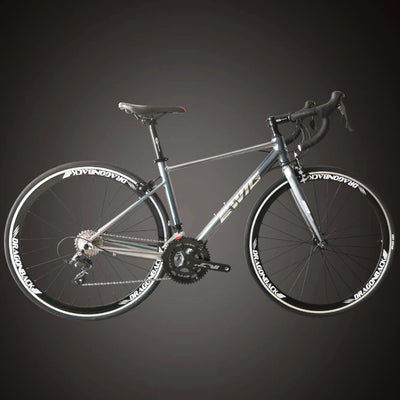
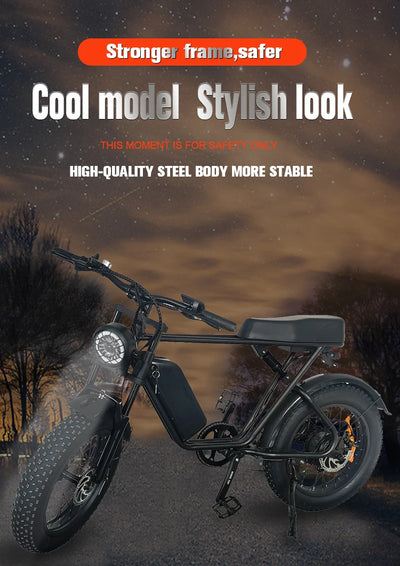
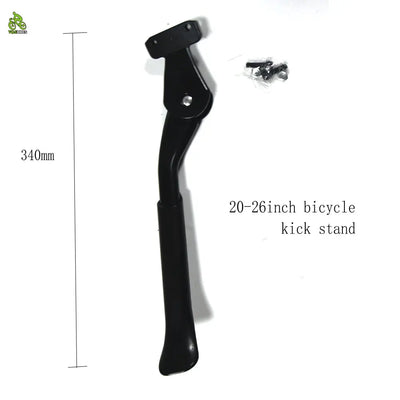
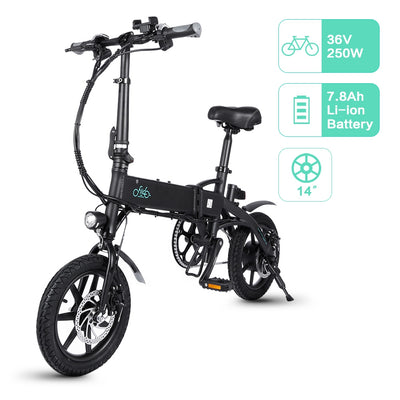
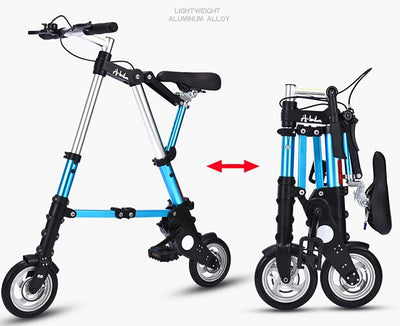
cialis canadian pharmacy https://canadacialisstore.com/ is it safe to order cialis from canadian pharmacy